We Asked Agencies About the Biggest Challenges CMOs Face—Here’s What They Said
The marketing world is rapidly shifting. Whether it’s the dawn of AI or the shift in focus to first-party data, marketing leadership is always juggling multiple things. To better understand the pressing issues CMOs face today, we reached out to a diverse range of marketing agencies, each with unique insights and experiences. Since agencies get to work with different types of CMOs from different markets, we believed they would be the best to ask about the common challenges marketing leadership faces.
This blog post delves into the top challenges CMOs are currently grappling with, as shared by the experts who work closely with them every day. Whether you’re a marketing professional, a business leader, or simply curious about the inner workings of modern marketing, join us as we explore the key pain points and potential solutions that are shaping the future of this dynamic field.
Note: The article is constantly updated as we gather more input from experts!
Evolving Roles and Data-Driven Decision Making
David Schwab | President, Chief Digital Strategist | Digital Industry Group
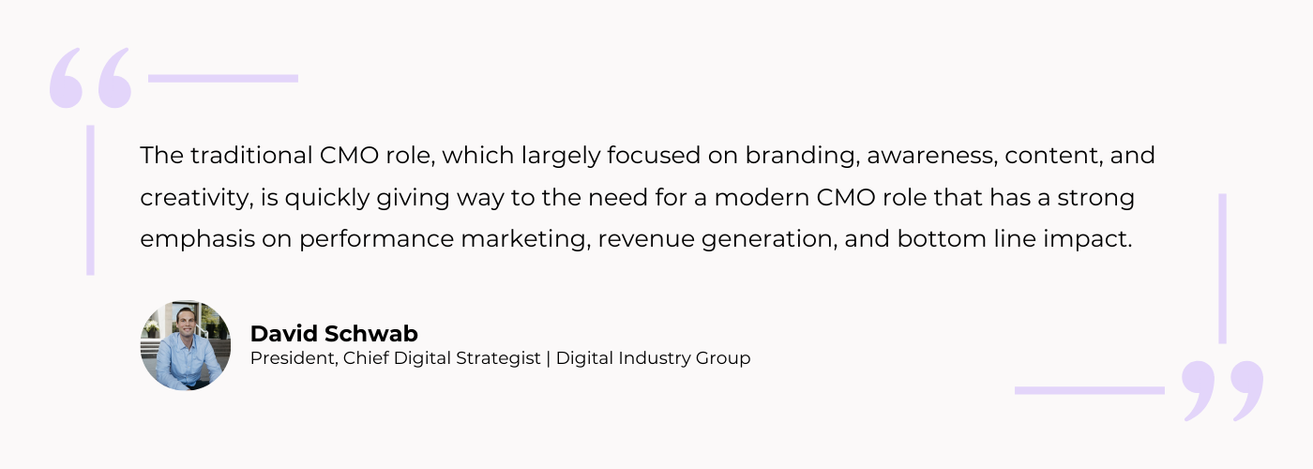
“The traditional CMO role, which largely focused on branding, awareness, content, and creativity, is quickly giving way to the need for a modern CMO role that has a strong emphasis on performance marketing, revenue generation, and bottom line impact. The modern CMO needs to be equally (if not more) confident discussing brand awareness as she is customer acquisition cost. The traditional CMO role is largely giving way to the more recent CRO (Chief Revenue Officer) role, which gives executive oversight to all revenue-generating business units (sales, marketing, customer success/retention). Summarizing, the primary challenge facing current CMOs is making the leap to confidently showing bottom-line business impact.”
Integrating Digital Marketing Efforts
Matthew Dwight | Head of Organic Growth | Dwight Digital LLC
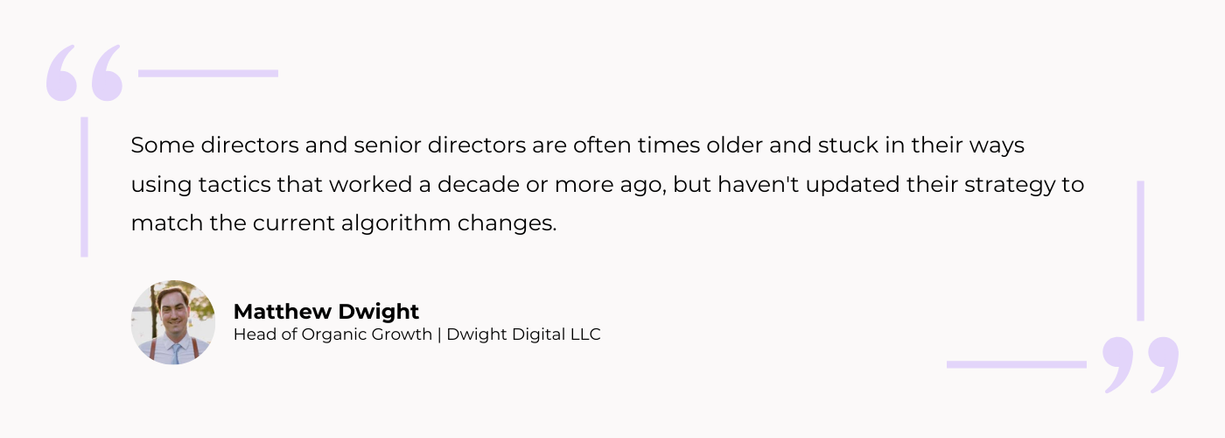
“We’ve consulted on projects with Fortune 100 companies and the most common thing I see and hear about from their CMOs are issues with adopting new tactics and keeping up with the constant algorithm changes from Google.
They have staff that have been there for 20 to 30 years plus and have worked their way up the chain.
The problem?
These directors and senior directors are often times older and stuck in their ways using tactics that worked a decade or more ago, but haven’t updated their strategy to match the current algorithm changes.
These CMO’s are pulling their hair out trying to understand why their traffic is half of their competitors even though they have more experienced directors and senior directors working constantly to resolve it.”
Leveraging AI for Customer Engagement
Jack White | Founder, Managing Partner | flavored soda
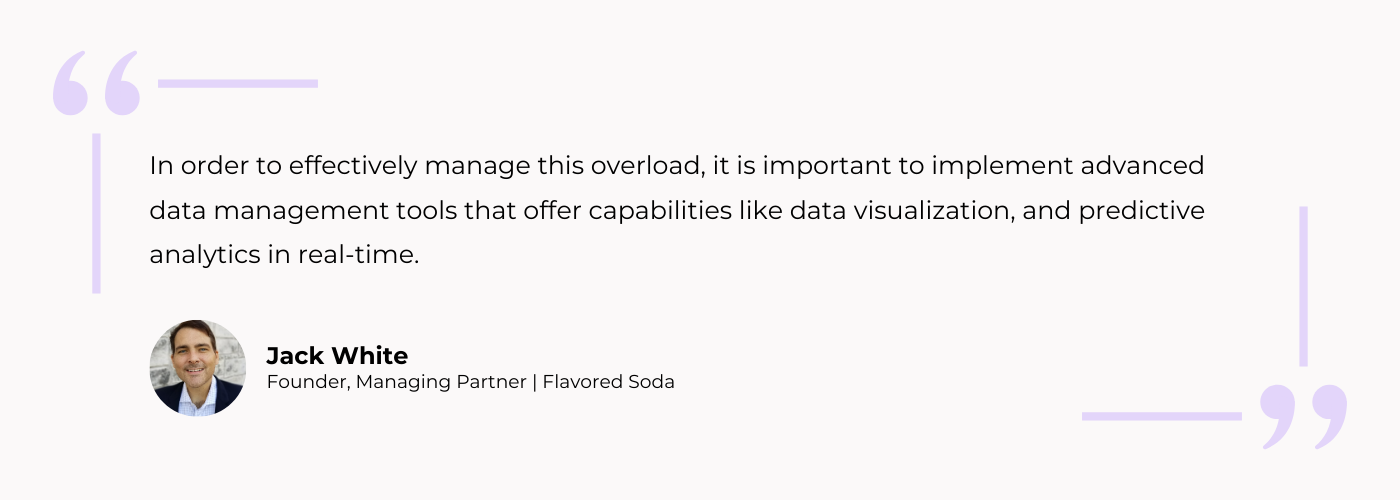
“Given the vast amount of data that is available (and growing), CMOs are inundated with information from various sources. Effectively collecting, analyzing, and leveraging this data to their benefit to make informed decisions is the challenge here.
In order to effectively manage this overload, it is important to implement advanced data management tools that offer capabilities like data visualization, and predictive analytics in real-time.”
Balancing Short-Term Results with Long-Term Goals
Mandy Idol |Co-Founder and Chief Marketing Officer | Indigo Collective Group
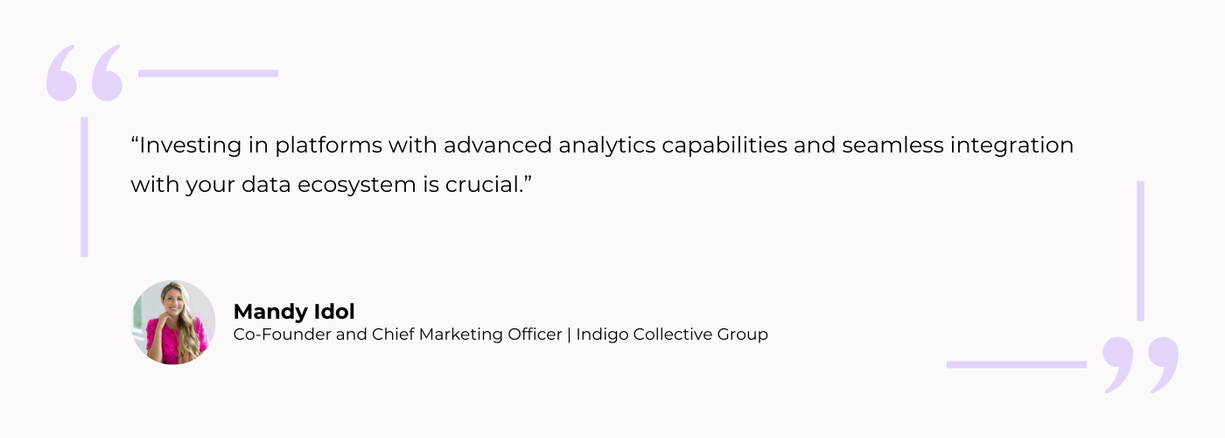
“1. Balancing Short-Term Results with Long-Term Brand Building: CMOs often face pressure to deliver immediate results and meet short-term revenue targets, sometimes at the expense of long-term brand equity and customer loyalty.
Solution: Strike a balance between short-term performance marketing initiatives and long-term brand-building efforts. Develop a comprehensive marketing strategy that includes both tactical campaigns to drive immediate sales and initiatives aimed at building brand awareness, trust, and loyalty over time. Communicate the importance of brand equity to stakeholders and emphasize the value of investing in long-term relationships with customers.
2. Adapting to Changing Consumer Behavior: Consumer preferences and behaviors are constantly evolving, making it challenging for CMOs to anticipate and respond effectively.
Solution: Conduct regular market research and customer insights to understand evolving trends and preferences. Adopt an agile approach to marketing, allowing for quick adjustments and iterations based on real-time feedback. Invest in technologies like artificial intelligence and predictive analytics to anticipate consumer needs and personalize marketing efforts accordingly.
3. Demonstrating ROI and Measuring Effectiveness: CMOs struggle to quantify the impact of marketing efforts and demonstrate a clear return on investment (ROI) to stakeholders.
Solution: Implement robust analytics and attribution models to track the performance of marketing campaigns across various channels. Focus on key performance indicators (KPIs) that align with business objectives and use data-driven insights to optimize strategies and allocate resources effectively.”
Adapting to Rapid Changes in Consumer Behavior
Mark Byrne | Director | New Vertical
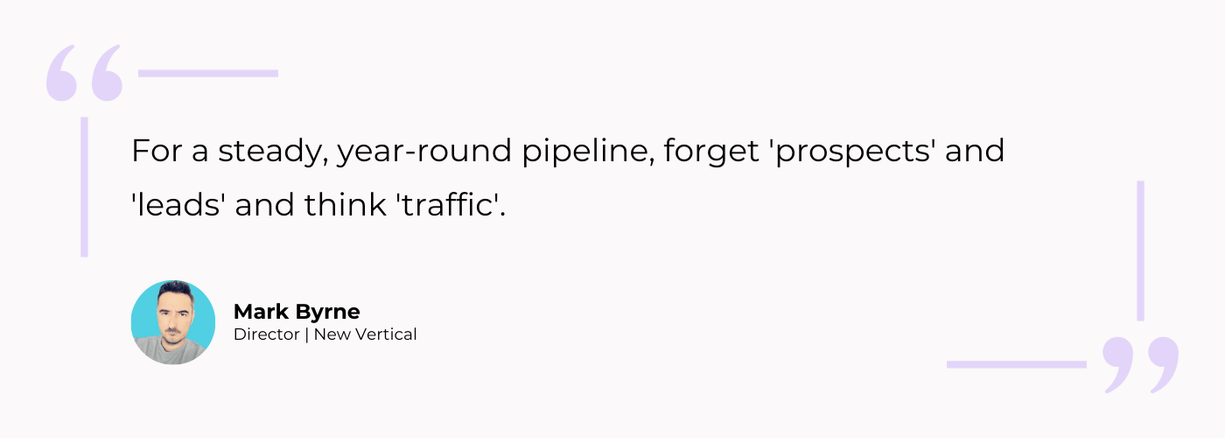
“Feast or famine lead funnels and pipelines. For most CMOs a steady flow of ICPs is unheard of, and their pipeline relies on a heavy amount of advertising based on “peak” periods. In reality, their ICPs are all out there searching for their products or services 24/7/365, so it’s a case of adjusting their current mindset. Forget “prospects” and “leads” and think “traffic”.
Content marketing and email outreach offers a year round supply of leads, for example, and if I had to pick one or the other, it would be content marketing every day of the week. Engaging and on-brand content as part of content hubs can sell silently and fill pipelines for a one-time capital outlay. Updating this content further increases the likelihood of continuous rankings and traffic.”
Demonstrating ROI of Marketing Activities
Deanna Allen | Vice President of Business Development | Craft & Communicate
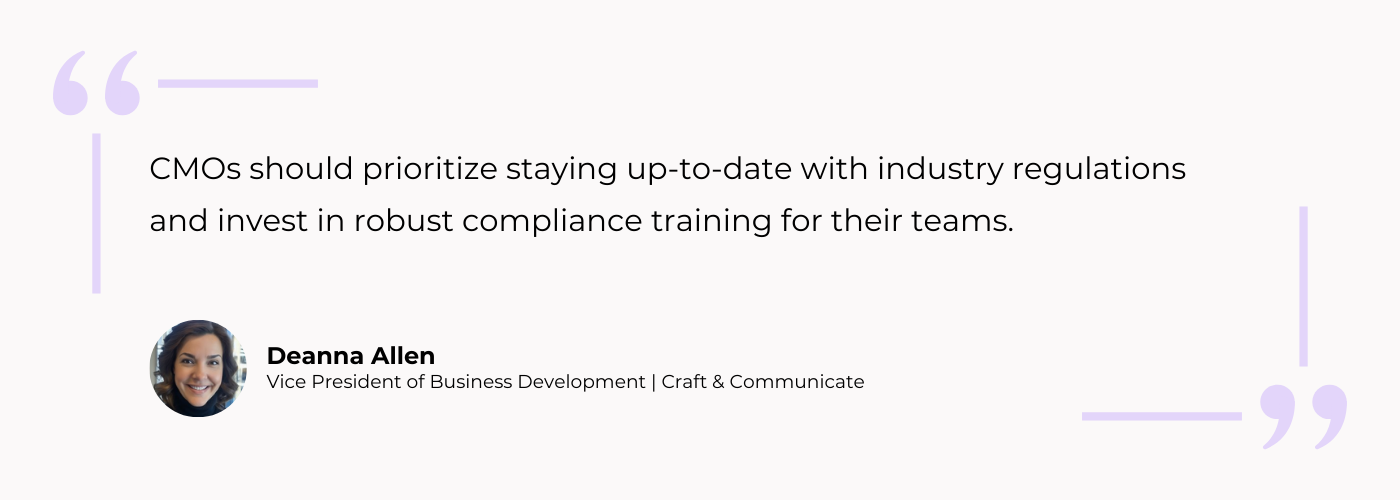
“In my experience in the healthcare sector, especially within senior living organizations, Chief Marketing Officers (CMOs) encounter several unique challenges. Firstly, navigating the complex regulatory environment and ensuring compliance while still effectively reaching target audiences can be daunting. To address this, CMOs should prioritize staying up-to-date with industry regulations and invest in robust compliance training for their teams.
Secondly, with the increasing importance of digital marketing, CMOs often struggle to effectively leverage digital channels to reach older demographics who may be less tech-savvy. Implementing user-friendly digital platforms and providing education and support to seniors and their families on using these platforms can help bridge this gap.
Additionally, in the competitive senior living market, differentiation is key. CMOs must find innovative ways to showcase their organization’s unique value proposition and establish a strong brand presence. This can involve highlighting specialized care offerings, promoting community engagement initiatives, and emphasizing the quality of life for residents.
Lastly, CMOs face the challenge of demonstrating the ROI of their marketing efforts, particularly in an industry where conversion cycles can be lengthy. Investing in comprehensive analytics tools and implementing robust tracking mechanisms can help CMOs measure the impact of their campaigns more accurately and make data-driven decisions to optimize marketing strategies.
Overall, by staying informed, embracing digital innovation, focusing on differentiation, and leveraging data-driven insights, CMOs in the healthcare sector can effectively navigate these challenges and drive success for their senior living organizations.”
Long Term Planning
Amanda Walls | Director | Cedarwood Digital

“I think one the biggest challenges for CMOs right now is hiring and retaining good talent into their team, especially in a market place which is constantly evolving.
Two years ago it was impossible to get talent and now the market is full of it again which can make longer-term planning and structuring teams difficult and can also lead to peaks and troughs from a retention perspective.
I think the key solution is to make sure you take your time to understand the structure of your team and what you want it to look like, the different skillsets you require and also being honest when things aren’t working, at the end of the day it’s important to train and support your team effectively, offer them development opportunities but also encourage self-learning in a marketplace where there’s so much on offer.”
Acquiring New Business
Jonathan Leafe | Managing Director | Leafe Consultancy
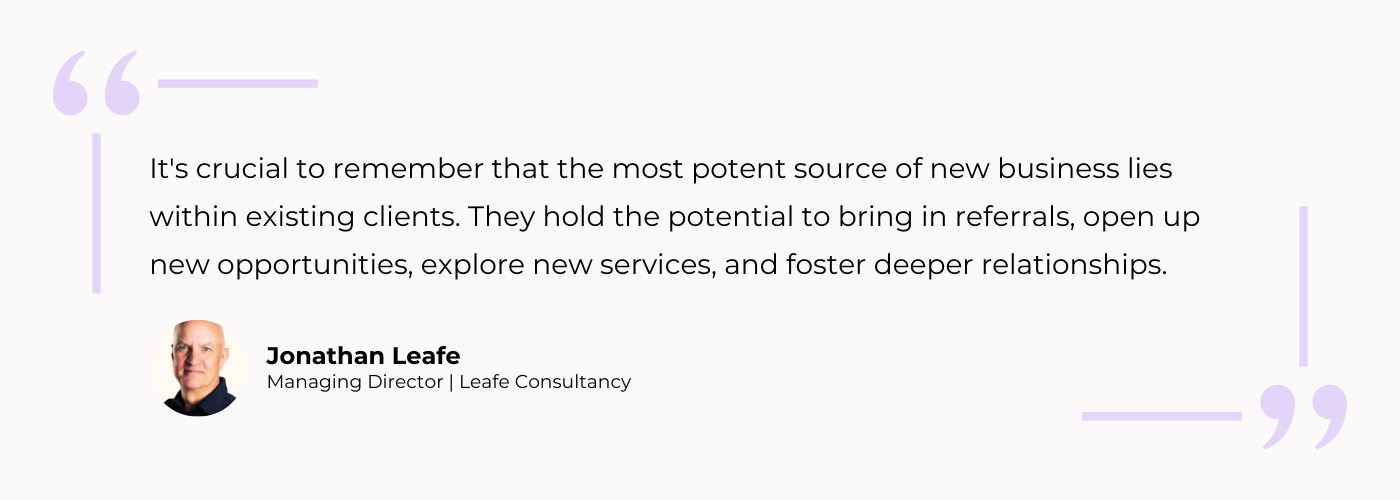
“It’s crucial to remember that the most potent source of new business lies within existing clients. They hold the potential to bring in referrals, open up new opportunities, explore new services, and foster deeper relationships.
This could be – referrals, new opportunities, new services, deeper relationships etc.
All of this needs to be curated in the same way as would be to locate brand new clients.
All marketing can be tailored to this: emails, social proof, webinars etc.”
Alignment With Stakeholders
Lauren Hagerty | CoFounder | Ophina Marketing
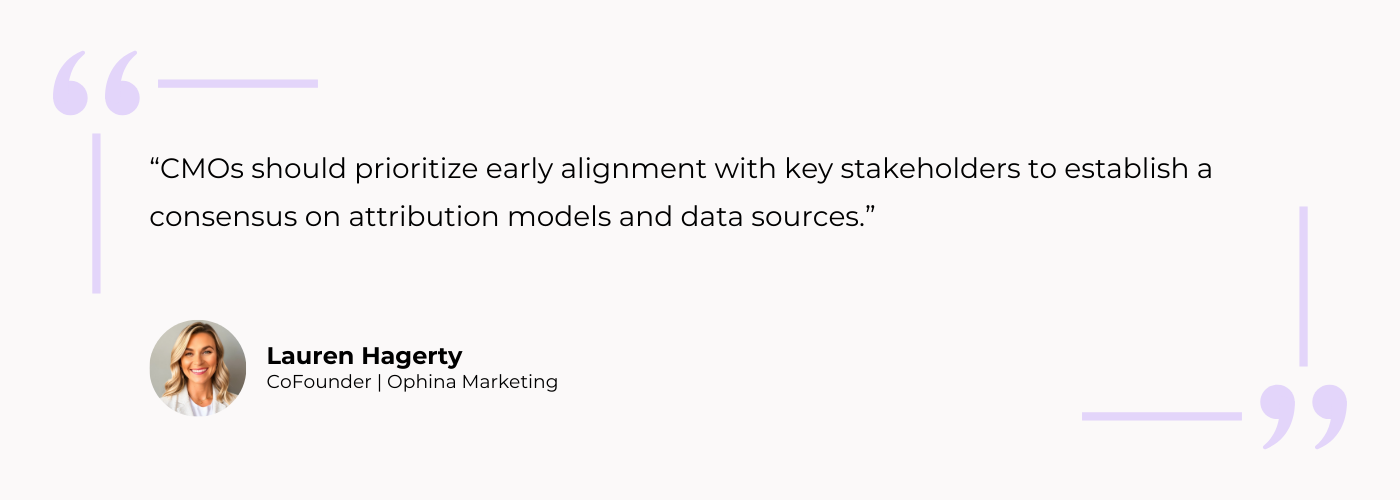
“Accurately tracking marketing ROI remains a perennial challenge for CMOs, especially in today’s era of intricate, multi-touch, multi-channel campaigns and evolving attribution models. Discerning precisely which collateral or campaign triggers a prospect’s conversion has become increasingly complex. To overcome these hurdles, CMOs should prioritize early alignment with key stakeholders to establish a consensus on attribution models and data sources. Investing in platforms with advanced analytics capabilities and seamless integration with your data ecosystem is crucial. However, the most critical step is continuous calibration. Regularly review results (monthly or quarterly) – manually – in collaboration with your team, evaluating the tools, data, and overall performance. Remember, technology is a fast-moving target, and human intuition, when applied judiciously, remains invaluable.”
Guiding Prospects Through Lead Qualification
Brian Ahmadi Tabatabaie | Founder & CEO | Maximum Profit Marketing Agency LLC
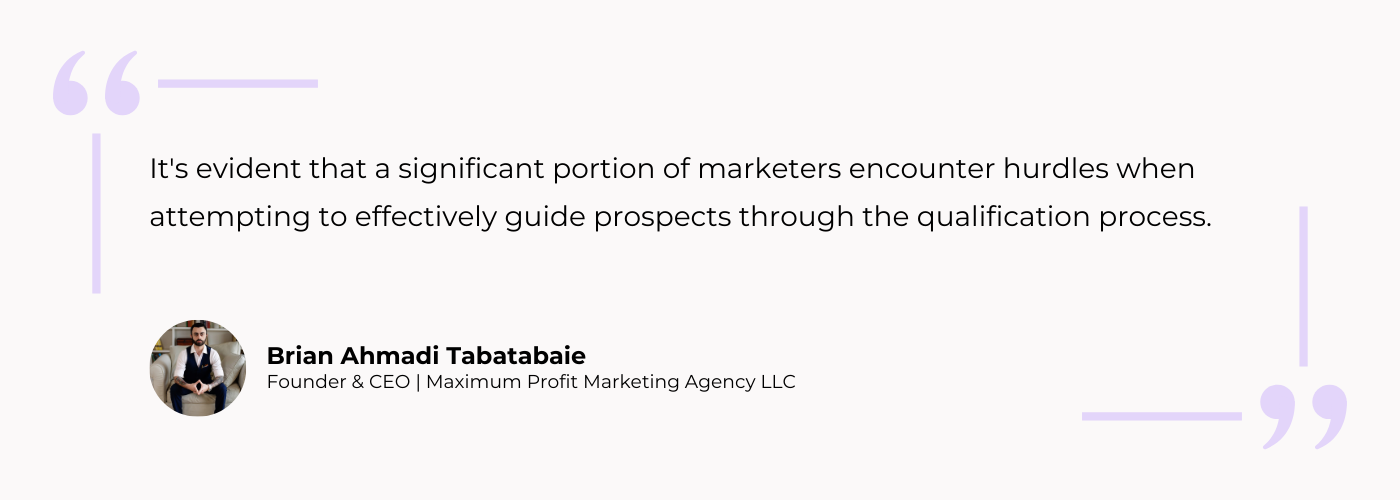
“In my extensive experience within the digital and physical marketing realm, a common challenge faced by many is the meticulous setup of campaigns and the adept qualification of leads for clientele. It’s evident that a significant portion of marketers encounter hurdles when attempting to effectively guide prospects through the qualification process. Specifically, the predominant method involves utilizing a series of forms and funnels to discern the suitability of potential clients. However, a key issue arises in the deliberate and strategic qualification of leads, distinguishing between those who are genuinely aligned with the business’s offerings and those who may not be the ideal fit. This nuanced process demands a comprehensive understanding of client requirements and a refined approach to lead qualification to ensure optimal outcomes.”
Proving Value to Sales Leadership
Kathryn Hawkins | Managing Director | Eucalypt Media
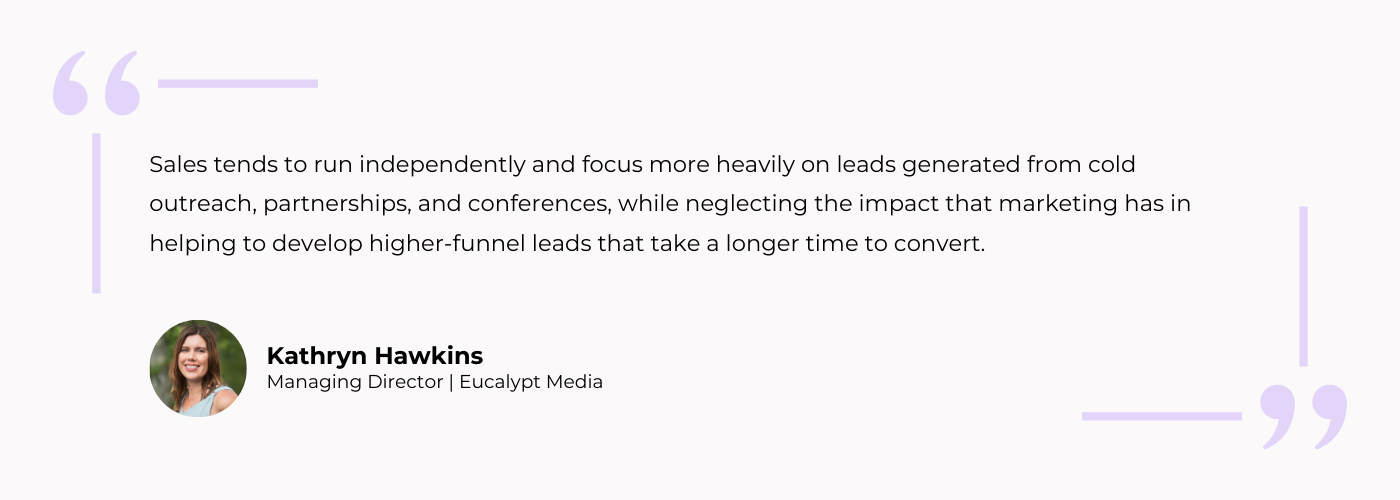
“Many of the CMOs I’ve worked with have struggled to align with and prove their value to sales leadership. Sales tends to run independently and focus more heavily on leads generated from cold outreach, partnerships, and conferences, while neglecting the impact that marketing has in helping to develop higher-funnel leads that take a longer time to convert.
To resolve this issue, I recommend that marketing work hand in hand with sales, interviewing them about their customers’ objections and use cases to develop customized sales collateral that the sales team can use effectively during their outreach.
It’s also important for marketing to build attribution models that will demonstrate their impact on generating leads and show the value of each marketing channel. Make sure that you’re properly attributing every brand touchpoint when it comes to web sign-ups — if a customer signed up for a demo after viewing a paid ad, but had previously found your site through organic search and read a blog post, it’s important to attribute the lead to both organic content and paid ad spend, ensuring that the CMO can properly allocate budget for the most effective mix of channels.”
Summing Up: Common Challenges CMOs Face
Based on the feedback from various agencies, here are the most common challenges CMOs encounter:
Alignment with Business Objectives:
Many respondents highlighted the challenge of aligning marketing strategies with the overall business goals. This includes ensuring that marketing efforts support the broader objectives of the company.
Technological Changes and Integration:
Keeping up with the rapid pace of technological advancements and integrating new marketing technologies and tools were frequently mentioned. CMOs need to stay updated with the latest trends and ensure their teams are proficient in using these tools.
Data Utilization and Analytics:
Effectively using data to drive decision-making and demonstrating the ROI of marketing activities are significant challenges. CMOs must navigate data overload and leverage analytics to gain meaningful insights.
Customer Engagement and Experience:
Creating cohesive and engaging customer experiences across multiple touchpoints was a common theme. This involves personalizing marketing efforts and ensuring consistent messaging.
Balancing Short-Term and Long-Term Goals:
Striking the right balance between achieving immediate marketing results and focusing on long-term brand building is a recurring issue. CMOs need strategies that cater to both short-term wins and sustained growth.
Budget Constraints:
Budget limitations, especially for startups and smaller companies, were noted as a challenge. CMOs must find cost-effective marketing strategies and optimize spending.
Adapting to Consumer Behavior:
The need to quickly adapt to changing consumer behaviors and preferences was highlighted. Agile marketing practices and continuous market research are essential to stay relevant.
Brand Consistency:
Ensuring brand consistency across various channels and platforms is a challenge. Developing clear brand guidelines and a unified strategy is necessary for maintaining a recognizable brand identity.
Content Saturation:
Overcoming content saturation and making their messaging stand out in a crowded market were common concerns. Creating high-quality, targeted content is essential.
Internal Resistance and Collaboration:
Navigating internal resistance to data-driven decisions and fostering collaboration across departments were mentioned. CMOs must balance data insights with human intuition and ensure effective communication with other teams.
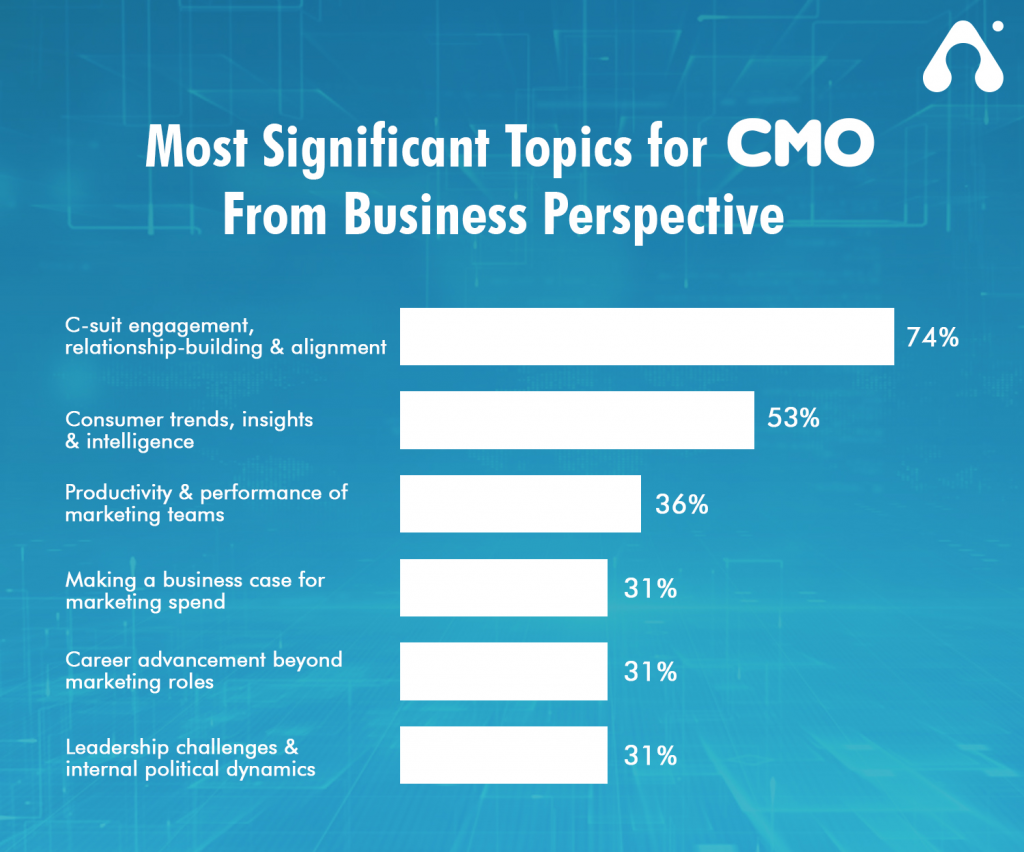
Image Source: Appventurez
Final Thoughts
The current marketing landscape presents CMOs with numerous challenges, as highlighted by industry experts. Aligning marketing efforts with business goals, leveraging advanced data analytics, and adapting to technological advancements are crucial yet complex tasks. CMOs must also focus on creating cohesive customer experiences, maintaining brand consistency, and balancing short-term results with long-term growth.
Despite these challenges, insights from various marketing agencies provide valuable strategies. Embracing new technologies, fostering collaboration, and continuously refining marketing approaches are essential for success. By staying updated with expert insights and maintaining a strategic focus, CMOs can effectively overcome hurdles and drive impactful marketing efforts.
Sell more, understand your customers’ journey for free!
Sales and Marketing teams spend millions of dollars to bring visitors to your website. But do you track your customer’s journey? Do you know who buys and why?
Around 8% of your website traffic will sign up on your lead forms. What happens to the other 92% of your traffic? Can you identify your visiting accounts? Can you engage and retarget your qualified visitors even if they are not identified?


